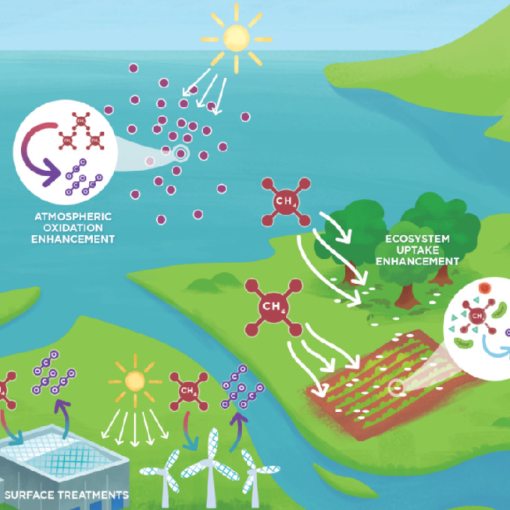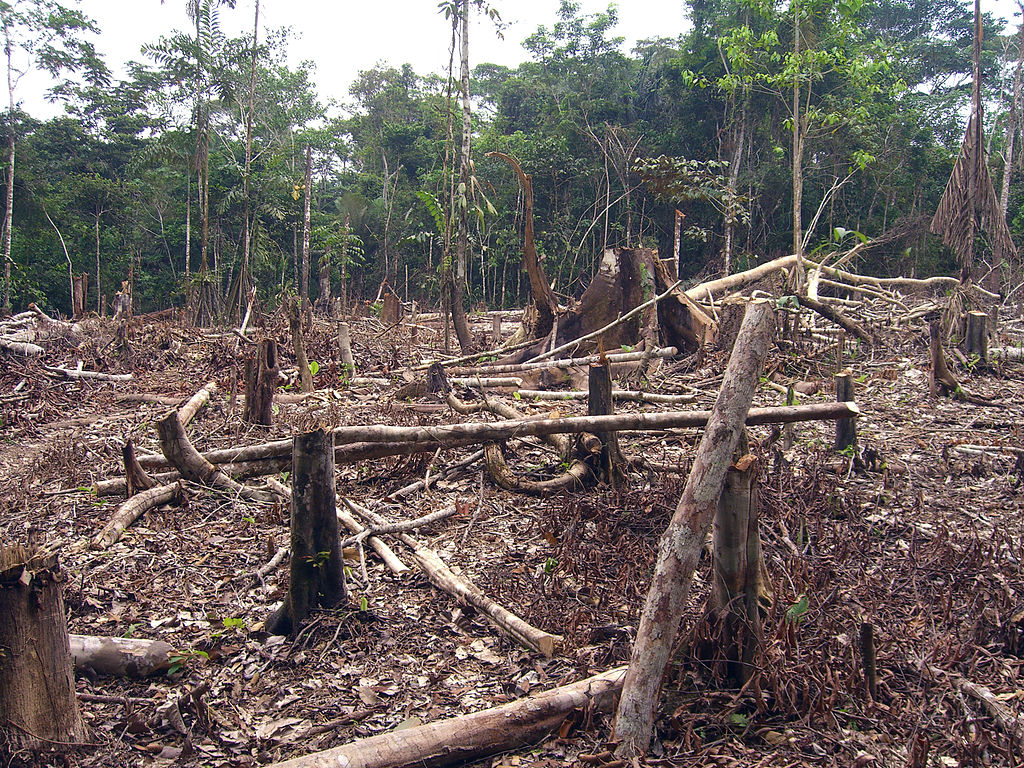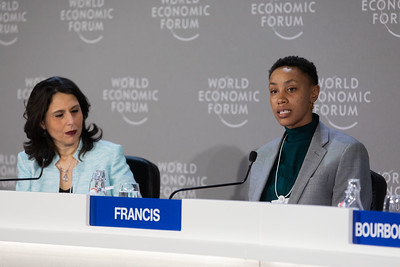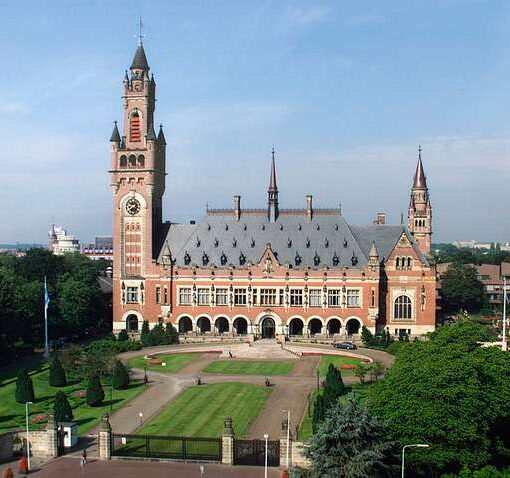On May 21, 2024, the International Tribunal for the Law of the Sea (ITLOS) released its long-awaited advisory opinion on climate change. The opinion was requested in 2022 by the Commission of Small Island States on Climate Change and International Law, which asked ITLOS to opine on States’ obligations to address climate change under the United Nations Convention on the Law of the Sea (UNCLOS). More than 40 states, international organizations, and NGOs submitted written comments on the request, and many others participated in oral hearings hosted by ITLOS. There was little discussion, either in the written statements or at the oral hearing, of so-called “marine geoengineering” activities that seek to use the ocean to combat climate change. The ITLOS advisory opinion similarly pays little attention to marine geoengineering, expressly mentioning it in just one paragraph (out of 441).
Unsurprisingly, given this cursory treatment, the advisory opinion does little to clarify the legal status of marine geoengineering, raising more questions than it answers. In particular, this post argues that ITLOS’ reasoning suggests that marine geoengineering activities—or at least a subset of them—might be viewed as both a source of marine pollution and a means of preserving the marine environment. But ITLOS fails to provide useful guidance on whether, when, and how marine geoengineering activities might be pursued. Instead, ITLOS seems content to leave those determinations to other treaty bodies.
The Potential Use of Marine Geoengineering to Combat Climate Change
Broadly defined, marine geoengineering refers to a suite of activities that involve deliberate intervention in the marine environment to manipulate natural processes, and thereby combat climate change. Geoengineering techniques are often divided into two broad categories. The first, known as greenhouse gas (GHG) removal, seeks to mitigate climate change by pulling GHGs – most commonly carbon dioxide – out of the atmosphere and durably storing them. The second category of marine geoengineering activities, known as solar radiation management or modification (SRM), do not directly target GHGs. Rather, SRM approaches seek to lessen the impacts of climate change by reflecting sunlight into outer space. Given the significant differences between GHG removal and SRM (both in terms of their objectives and how they work), some have argued that they should not be lumped together under the “geoengineering” moniker. But that term continues to be widely used in international discussions.
Marine geoengineering first came to the attention of the international community in 2007, when a U.S.-based company—Planktos—announced plans to undertake a project aimed at removing and storing carbon dioxide. Specifically, Planktos proposed to use an approach known as ocean fertilization, whereby iron or other nutrients are added to the ocean with the goal of stimulating the growth of phytoplankton, which uptake carbon dioxide through photosynthesis and convert it into organic carbon. The hope is that the carbon will end up in the deep ocean, where it will remain stored for long periods, but that has not yet been proven. (For more on the scientific uncertainties regarding ocean fertilization, see here.)
The Planktos proposal never went ahead, but it did prompt the international community to consider whether and how ocean fertilization should be regulated. Much of the discussion has occurred under the 1972 Convention on the Prevention of Marine Pollution by Dumping of Waste and Other Matter (London Convention) and the 1996 Protocol to that Convention (London Protocol). In 2008, the parties determined that “the scope of the London Convention and Protocol includes ocean fertilization activities,” and adopted a non-binding governance framework for those activities. Later, in 2013, the parties to the London Protocol adopted an amendment on marine geoengineering. The amendment currently only applies to ocean fertilization, but the parties are considering expanding it to also apply to other GHG removal and SRM activities, specifically:
- Ocean alkalinity enhancement, whereby alkaline materials are added to the ocean, with the aim of triggering a series of chemical reactions through which carbon dioxide in the water is converted into other forms of dissolved inorganic carbon, thus enabling the ocean to uptake more carbon dioxide from the atmosphere.
- Macroalgae cultivation, which involves growing kelp or other types of seaweed that uptake carbon dioxide and stores it, in the form of organic carbon, in the plant biomass. That biomass can then, at least in theory, be sunk into the deep ocean to sequester the carbon it contains.
- Marine cloud brightening, which aims to increase the brightness and thus the reflectivity of certain clouds. One commonly discussed approach for marine cloud brightening involves injecting sea salt spray or other materials into clouds.
- Ocean albedo modification using microbubbles or reflective particles, which involves spraying or injecting microbubbles of air into surface ocean waters, with the goal of increasing the ocean’s reflectivity.
It should be noted that these are not the only marine geoengineering activities that scientists have proposed or that are currently being researched. They have, however, been the focus of recent discussions under the London Convention and Protocol. Those discussions have not, to date, resulted in any legally binding instruments to regulate marine geoengineering. The 2013 amendment is intended to be binding but has not yet entered into force. For that to happen, the amendment must be ratified by two-thirds of the 53 parties to the London Protocol, but only six States have stepped up so far. As a result, there is significant uncertainty as to how marine geoengineering activities will be treated, and different countries have taken different approaches.
Given the slow rate of progress under the London Convention and Protocol, some had hoped that the ITLOS advisory opinion might shed additional light on the treatment of marine geoengineering under UNCLOS. But, in fact, the advisory opinion raises more questions than it answers. (At this point, it should be noted that ITLOS was not, strictly speaking, required to opine on marine geoengineering since it was not asked to do so in the request for an advisory opinion filed by the Commission on Small Island States on Climate Change and International Law (COSIS). However, the COSIS request was framed in very general terms, and ITLOS did address other issues not specifically mentioned in the request (e.g., around the need for climate adaptation)).
ITLOS’ Findings With Respect to States’ Obligations to Control Marine Pollution from GHG Emissions
As has already been widely reported, one of the key conclusions in the ITLOS advisory opinion is that “anthropogenic GHG emissions into the atmosphere constitute pollution of the marine environment within the meaning of article 1, paragraph 1, subparagraph 4, of” UNCLOS (para 179). To reach that conclusion, ITLOS broke the definition of marine pollution in article 1 of UNCLOS into its three constituent parts, noting that: “(1) there must be a substance or energy; (2) this substance or energy must be introduced by humans, directly or indirectly, into the marine environment, and (3) such introduction must result or be likely to result in deleterious effects” (para 161). ITLOS further clarified that, while the thee “criteria are cumulative” (i.e., all of them must be met), the definition of marine pollution in UNCLOS is otherwise broad and “general in that it encompasses whatever satisfies the criteria” (para 161).
ITLOS’ finding that anthropogenic GHG emissions constitute marine pollution triggers the application of article 194 of UNCLOS, which declares that “States shall take . . . all measures . . . that are necessary to prevent, reduce and control pollution of the marine environment from any source.” ITLOS noted that article 194 “leaves it to each State to determine what measures are necessary” but concluded that the determination must be made “objectively” taking into account, among other things, the best available science on climate change and the international rules and standards adopted to address it (paras 206-207). After surveying both, ITLOS declared that article 194 of UNCLOS “imposes upon States a legal obligation . . . to reduce [GHG] emissions” (para 223). It characterizes that obligation as one of “due diligence,” requiring each State to “put in place a national system” to control emissions, and effectively enforce that system (among other things) (para 235).
ITLOS’ focus on reducing GHG emissions makes sense given that it is the single most important action required to combat climate change. However, the latest climate science makes clear that emissions reductions alone will not be sufficient, and GHG removal will also be required. The Intergovernmental Panel on Climate Change’s Sixth Assessment Report, which is quoted extensively in the advisory opinion, found that GHG removal will be essential to achieve the goals of the 2015 Paris Agreement, which ITLOS says should inform the assessment of the measures necessary to combat pollution. Despite that, though, the advisory opinion does not discuss the potential use of GHG removal to address pollution of the marine environment from anthropogenic GHG emissions.
The reasoning in the advisory opinion suggests that ITLOS does not view GHG removal and other forms of marine geoengineering as ways of addressing climate-related pollution but rather as potentially polluting activities. Indeed, in the sole paragraph discussing marine geoengineering, ITLOS warned that “Article 195 of [UNCLOS] requires States, in taking measures to prevent, reduce and control pollution of the marine environment, not to transfer . . .damage or hazards from one area to another or transform one type of pollution into another” (para 231). ITLOS then went on to state: “Marine geoengineering would be contrary to article 195 if it has the consequence of transforming one type of pollution into another” (para 231).
The advisory opinion does not explore when marine geoengineering activities might involve pollution of the marine environment. ITLOS’ finding that GHG emissions result in marine pollution is illustrative, however. Activities like ocean fertilization would meet the three criteria for marine pollution identified by ITLOS: (1) a substance (e.g., iron) (2) is introduced into the marine environment through human activities (e.g., discharge from a vessel into ocean waters) and (3) could have deleterious effects (e.g., causing algae booms and/or nutrient robbing). The same might be said of various other marine geoengineering activities, such as ocean alkalinity enhancement and marine cloud brightening.
All of this suggests that, where a State uses or allows marine geoengineering, it could be found to have engaged in or allowed a polluting activity in violation of UNCLOS (at least in some circumstances). However, other parts of the ITLOS advisory opinion suggest that marine geoengineering could be viewed as a means of preserving and protecting the marine environment, which States have an obligation to do under UNCLOS.
ITLOS’ Findings With Respect to States Obligations’ to Protect and Preserve the Marine Environment
In the advisory opinion, ITLOS recognized that climate change is negatively impacting the ocean in various ways, including through ocean acidification and warming, both of which pose serious risks to marine species. ITLOS further recognized that, “even if anthropogenic GHG emissions were to cease, the deleterious effects on the marine environment would nevertheless continue owing to the extent of GHGs already accumulated in the atmosphere” (para 199). Certain marine geoengineering techniques—particularly those involving GHG removal—could be used to mitigate those effects.
That is notable because, under article 192 of UNCLOS, “States have the obligation to protect and preserve the marine environment.” The ITLOS advisory opinion described this obligation as “broad [in] scope, encompassing any type of harm or threat to the marine environment,” including those arising from climate change (paras 385 and 388). States thus have an obligation to protect the marine environment from climate-related impacts. Moreover, to the extent that climate change has already damaged the marine environment, states may need to take steps to remedy that damage. In this regard, the advisory opinion stated: “Where the marine environment has been degraded, the Tribunal is of the view that the term “preservation” may include restoring marine habitats and ecosystems” (para 386). However, since the word “may” was used, the exact scope of States’ obligation is uncertain.
In the advisory opinion, ITLOS noted that participants identified three broad categories of actions that could be taken to protect and preserve the marine environment in the context of climate change: (1) climate change mitigation actions, (2) climate adaptation and resilience actions, and (3) actions to protect marine ecosystems that sequester carbon dioxide. ITLOS confirmed that states have an “obligation” to reduce GHG emissions and are “require[d] to implement . . . resilience and adaptation actions as described in the climate change treaties.” ITLOS did not, however, explicitly address States’ obligations with respect to protecting marine ecosystems that sequester carbon dioxide. ITLOS noted that “carbon sequestration” could be enhanced “through measures to restore the marine environment” but did not provide any further guidance on the precise measures States can, should, or must take. Many marine geoengineering activities have the potential to increase carbon sequestration in the ocean, while also helping to mitigate ocean acidification and other negative impacts from climate change. Given that, does article 192 of UNCLOS allow, or even require, States to pursue those activities? And, if so, how does that square with ITLOS’ warning that the activities might violate article 195?
Conclusion
The ITLOS advisory opinion does little to resolve the long-standing uncertainty regarding the legal status of marine geoengineering activities. On the contrary, the opinion raises more questions than it answers. ITLOS seems content to leave those questions to others. Indeed, in the advisory opinion, ITLOS noted that “marine geoengineering has been the subject of discussions and regulations in various fora,” including the London Convention and Protocol. But after nearly twenty years, the regulatory framework for marine geoengineering adopted by the parties to the London Convention and Protocol has still not entered into force. Perhaps the advisory opinion will spur the parties into action.

Romany Webb
Romany Webb is a Research Scholar at Columbia Law School, Adjunct Associate Professor of Climate at Columbia Climate School, and Deputy Director of the Sabin Center for Climate Change Law.




